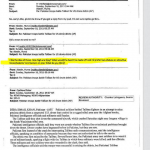This is NOT a final deal, it is only a Memorandum of Understanding that has a date of June 30 attached to it. That of course is an organic date also. There are ‘snap-back’ sanctions threats in place IF the IAEA determines that Iran has violated conditions. What major question that remains is what are the real cures to Iran violating the conditions by the IAEA.
Iran still will have 5000-6000 centrifuges spinning and those provide Iran less than a year for a break-out condition, meaning a weapon can still be gained.
• The basis for an agreement for a peaceful Iranian nuclear program and a lifting of sanctions against that nation has been reached, EU foreign policy chief Federica Mogherini announced Thursday in Switzerland. “We have reached solutions on key parameters of a joint comprehensive plan of action,” she said.
• Iran’s enrichment capacity and stockpile would be limited, and Iran’s sole enrichment facility would be at the Natanz nuclear facility, Mogherini said. Other nuclear facilities would be converted for other uses, she said.
• Under the agreement, the nuclear facility at Fordow would be converted to a nuclear physics and technology center and the facility at Arak would be redesigned as a heavy-water research reactor that will not produce weapons-grade plutonium.
• The European Union would terminate all nuclear-related economic and financial sanctions against Iran, and the United States would do the same once Iran’s implementation of the agreement is confirmed, according to announcements of the deal.
• The United Nations would terminate all previous resolutions sanctioning Iran, and would incorporate other restrictions for an agreed-upon period, according to Thursday’s announcements.
Lausanne, Switzerland (CNN)The United States and other world powers have agreed on the general terms of a deal meant to keep Iran’s nuclear program peaceful, a major breakthrough after months of high-stakes negotiations.
The deal, announced Thursday evening in Switzerland, calls for Iran to limits its enrichment capacity and stockpile in exchange for the European Union lifting economic sanctions that have hobbled Iran’s economy.
Iran also agreed to enrich nuclear materials only at one plant, with other nuclear facilities converted for other uses, said Federica Mogherini, foreign policy chief for the European Union.
The United States would lift many sanctions on Iran after Iran’s implementation of the agreement is confirmed.
Leading negotiators announced the deal in a news conference in Lausanne, Switzerland, where they have been meeting for months.
Negotiators must resolve additional details of a final deal by the end of June. The announcement marks the end of a round of talks that started last week.
They were supposed to reach a framework for a deal by Tuesday but stretched the talks into Thursday.
The world powers involved in the talks were the United States, Russia, China, France, the United Kingdom and Germany.
The talks, aimed at reaching a preliminary political deal on Iran’s nuclear program, blew past their initial, self-imposed deadline of late Tuesday as Iranian and U.S. negotiators struggled to find compromises on key issues.
But the negotiators doggedly continued their work in Lausanne, trying to overcome decades of mistrust between Tehran and Washington.
The mutual mistrust has been a serious problem in the talks, Iranian Foreign Minister Javad Zarif said earlier Thursday.
“I believe respect is something that needs to be exercised in practice and in deeds, and I hope that everyone is engaging in that in mutual respect,” he said.
‘A few meters from the finishing line’
Iran wants swift relief from punishing sanctions that have throttled its economy. And Western countries want to make sure any deal holds Iran back from being able to rapidly develop a nuclear weapon.
The Obama administration needed something solid enough it can sell to a skeptical Congress, which has threatened to impose new sanctions on Iran. The potential deal is also coming under sustained attack from Israeli Prime Minister Benjamin Netanyahu.

